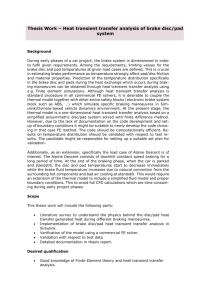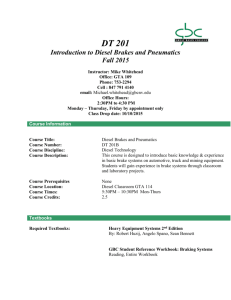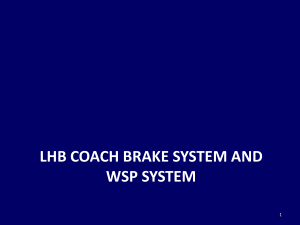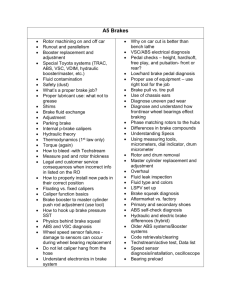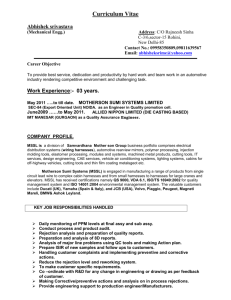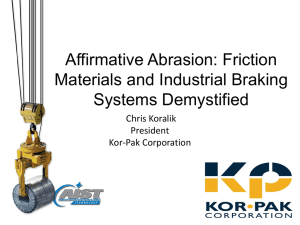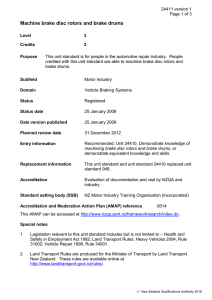Piet Hub/Disc Brake Info
advertisement
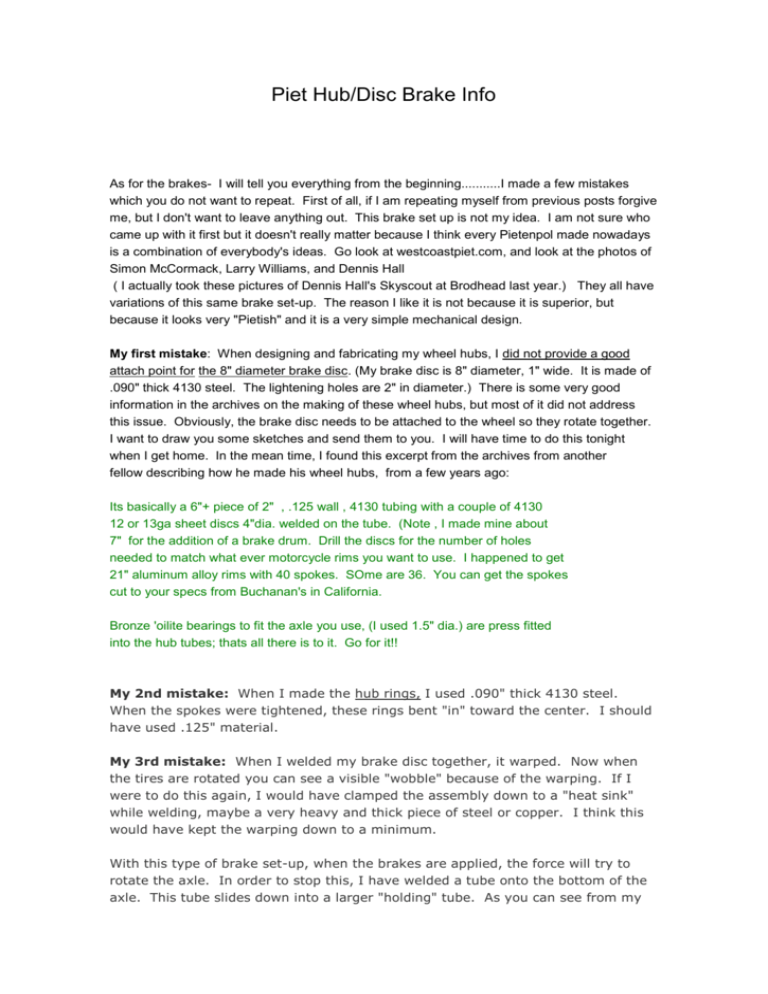
Piet Hub/Disc Brake Info As for the brakes- I will tell you everything from the beginning...........I made a few mistakes which you do not want to repeat. First of all, if I am repeating myself from previous posts forgive me, but I don't want to leave anything out. This brake set up is not my idea. I am not sure who came up with it first but it doesn't really matter because I think every Pietenpol made nowadays is a combination of everybody's ideas. Go look at westcoastpiet.com, and look at the photos of Simon McCormack, Larry Williams, and Dennis Hall ( I actually took these pictures of Dennis Hall's Skyscout at Brodhead last year.) They all have variations of this same brake set-up. The reason I like it is not because it is superior, but because it looks very "Pietish" and it is a very simple mechanical design. My first mistake: When designing and fabricating my wheel hubs, I did not provide a good attach point for the 8" diameter brake disc. (My brake disc is 8" diameter, 1" wide. It is made of .090" thick 4130 steel. The lightening holes are 2" in diameter.) There is some very good information in the archives on the making of these wheel hubs, but most of it did not address this issue. Obviously, the brake disc needs to be attached to the wheel so they rotate together. I want to draw you some sketches and send them to you. I will have time to do this tonight when I get home. In the mean time, I found this excerpt from the archives from another fellow describing how he made his wheel hubs, from a few years ago: Its basically a 6"+ piece of 2" , .125 wall , 4130 tubing with a couple of 4130 12 or 13ga sheet discs 4"dia. welded on the tube. (Note , I made mine about 7" for the addition of a brake drum. Drill the discs for the number of holes needed to match what ever motorcycle rims you want to use. I happened to get 21" aluminum alloy rims with 40 spokes. SOme are 36. You can get the spokes cut to your specs from Buchanan's in California. Bronze 'oilite bearings to fit the axle you use, (I used 1.5" dia.) are press fitted into the hub tubes; thats all there is to it. Go for it!! My 2nd mistake: When I made the hub rings, I used .090" thick 4130 steel. When the spokes were tightened, these rings bent "in" toward the center. I should have used .125" material. My 3rd mistake: When I welded my brake disc together, it warped. Now when the tires are rotated you can see a visible "wobble" because of the warping. If I were to do this again, I would have clamped the assembly down to a "heat sink" while welding, maybe a very heavy and thick piece of steel or copper. I think this would have kept the warping down to a minimum. With this type of brake set-up, when the brakes are applied, the force will try to rotate the axle. In order to stop this, I have welded a tube onto the bottom of the axle. This tube slides down into a larger "holding" tube. As you can see from my previous photo, I have elongated this "holding" tube. The reason is, that if only one wheel falls into a hole on the runway, the axle will raise only on one side. You can also see this elongated sleeve "holding" tube if you look at the photos of Simon McCormack (from Australia) on westcoastpiet.com.

